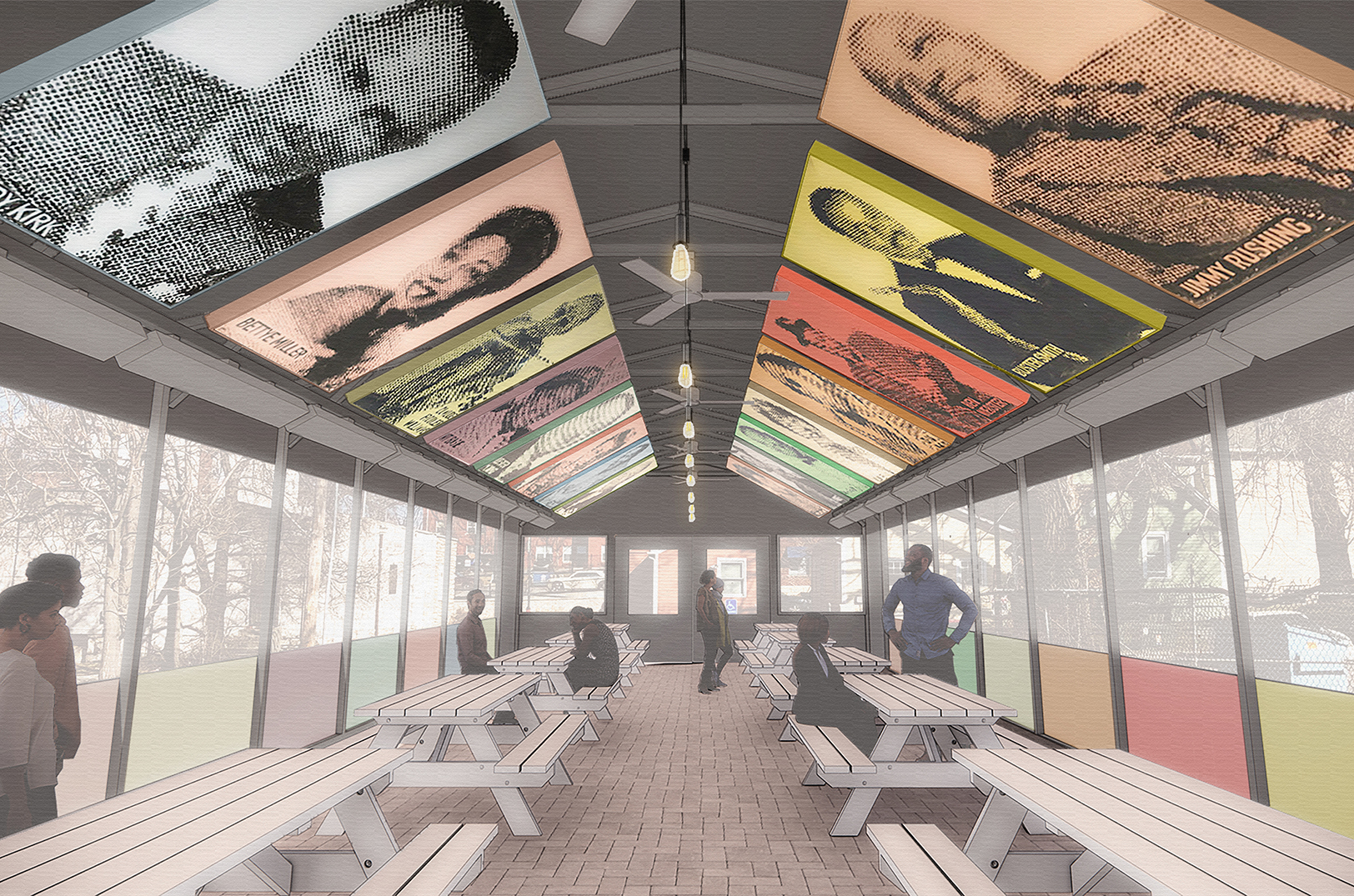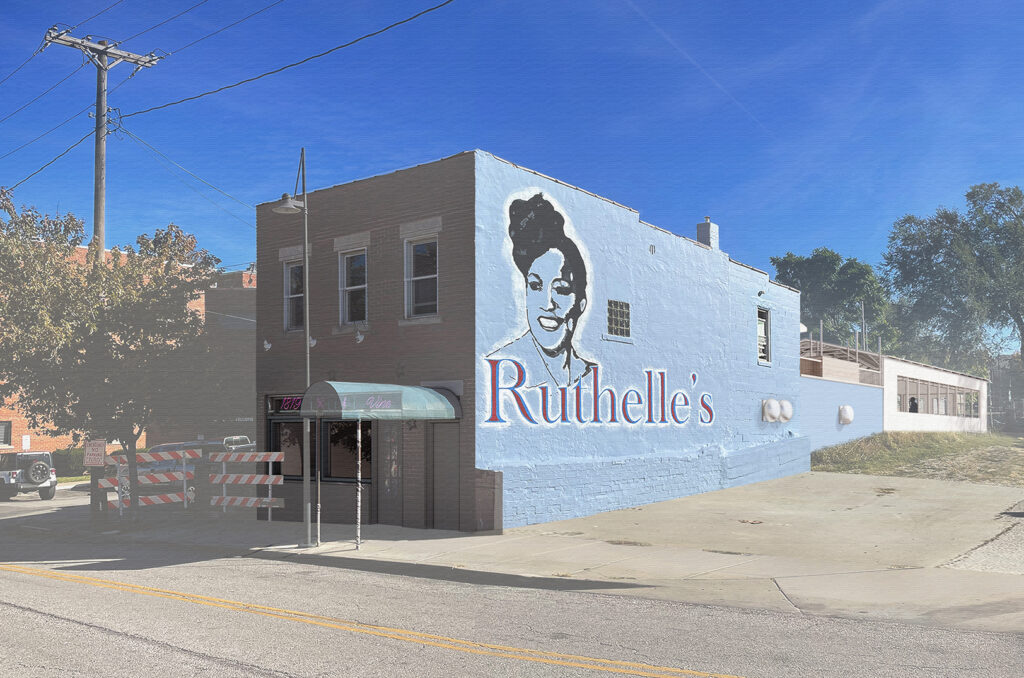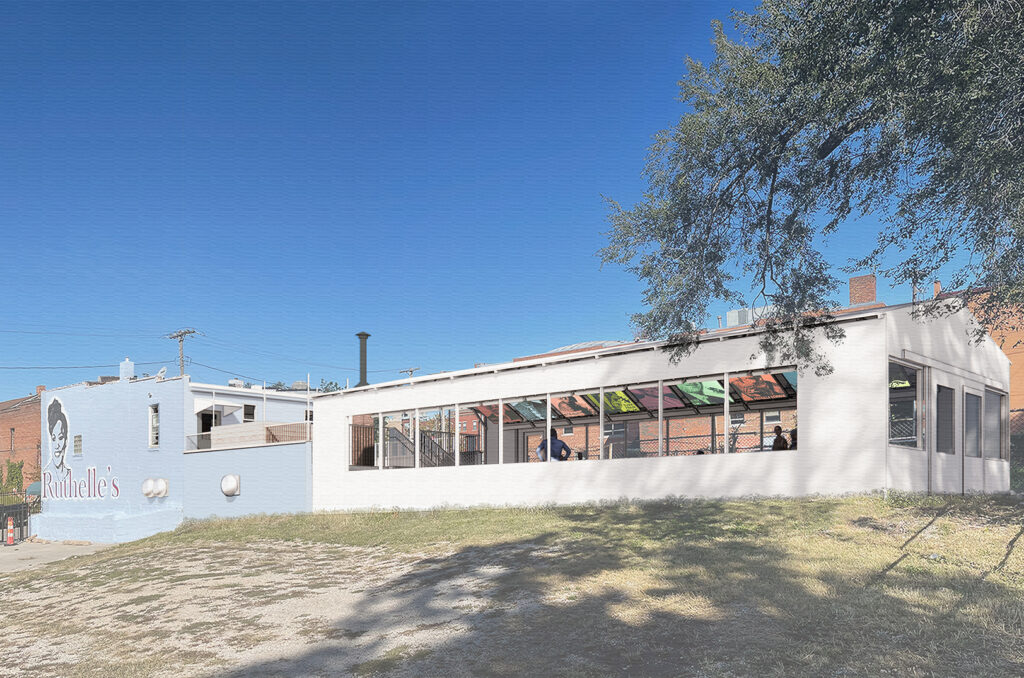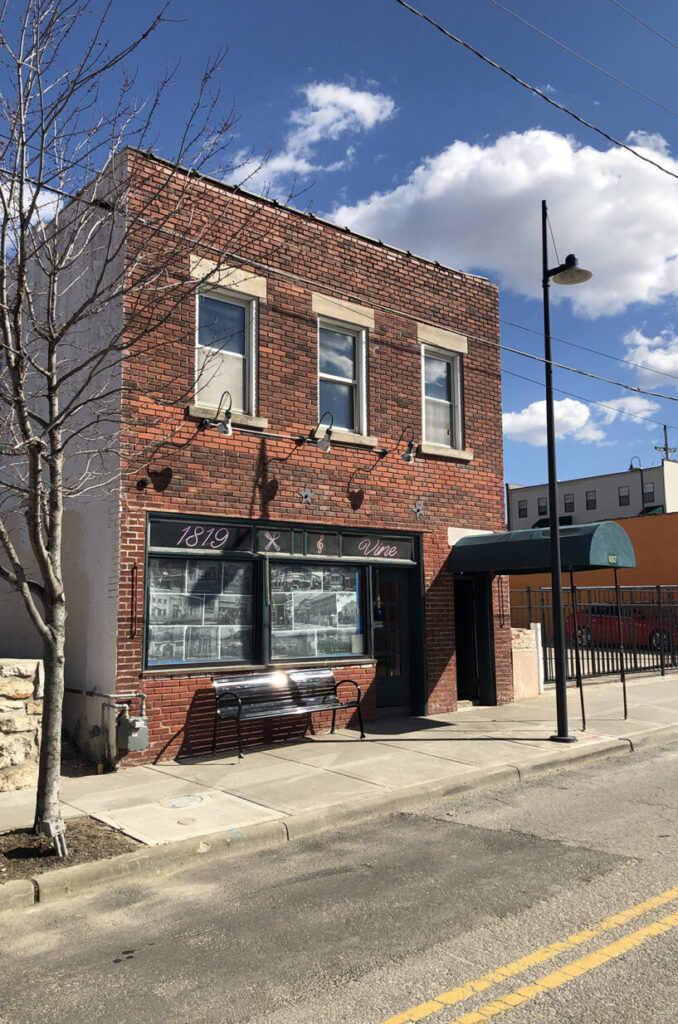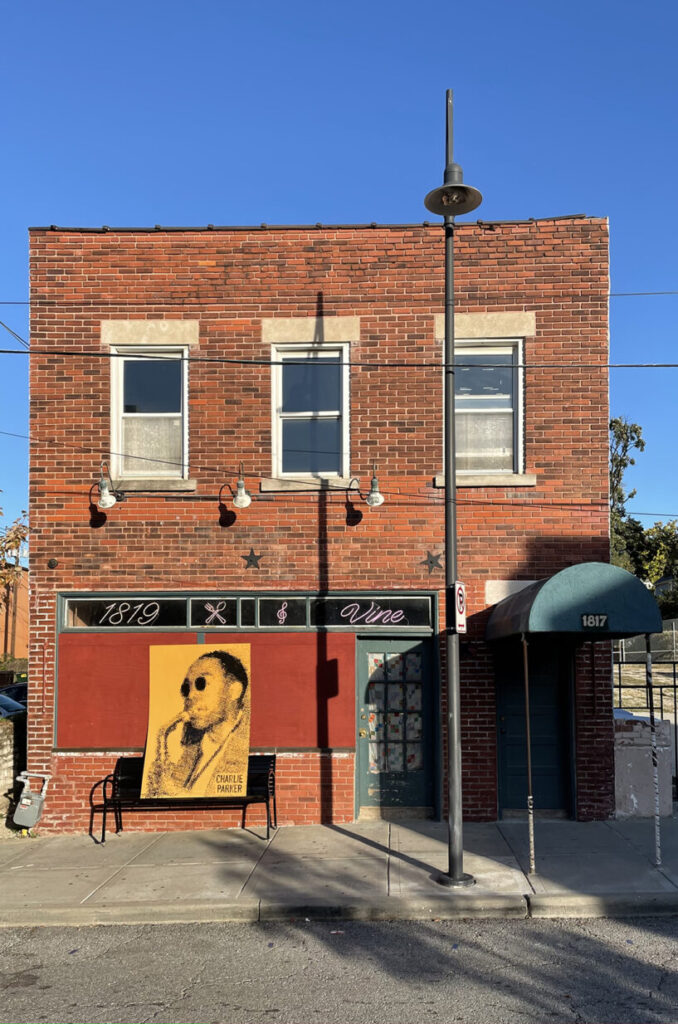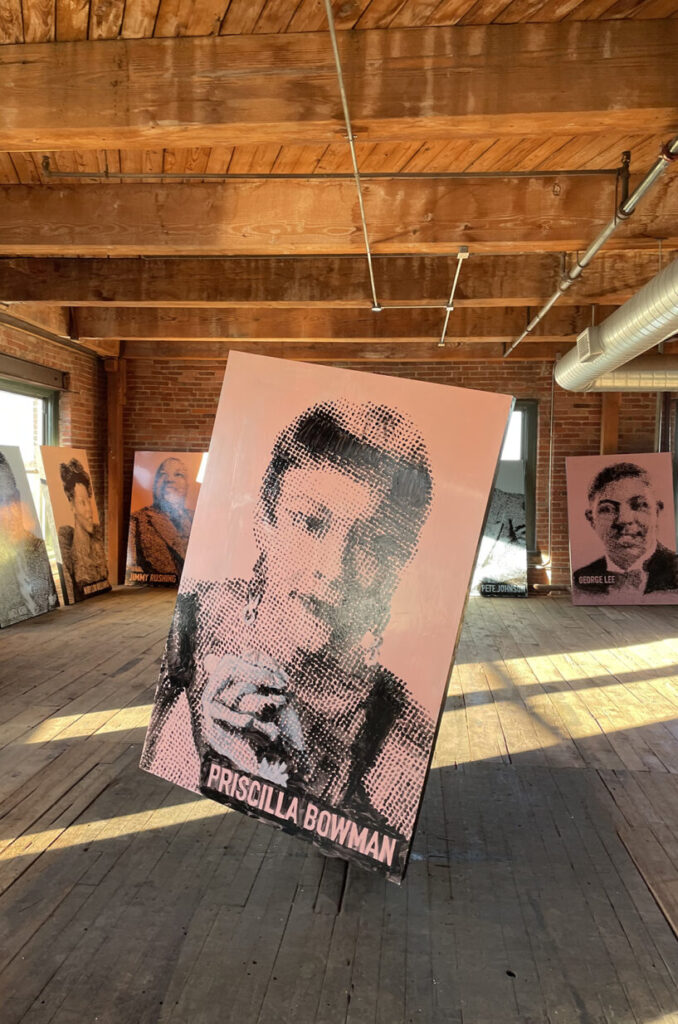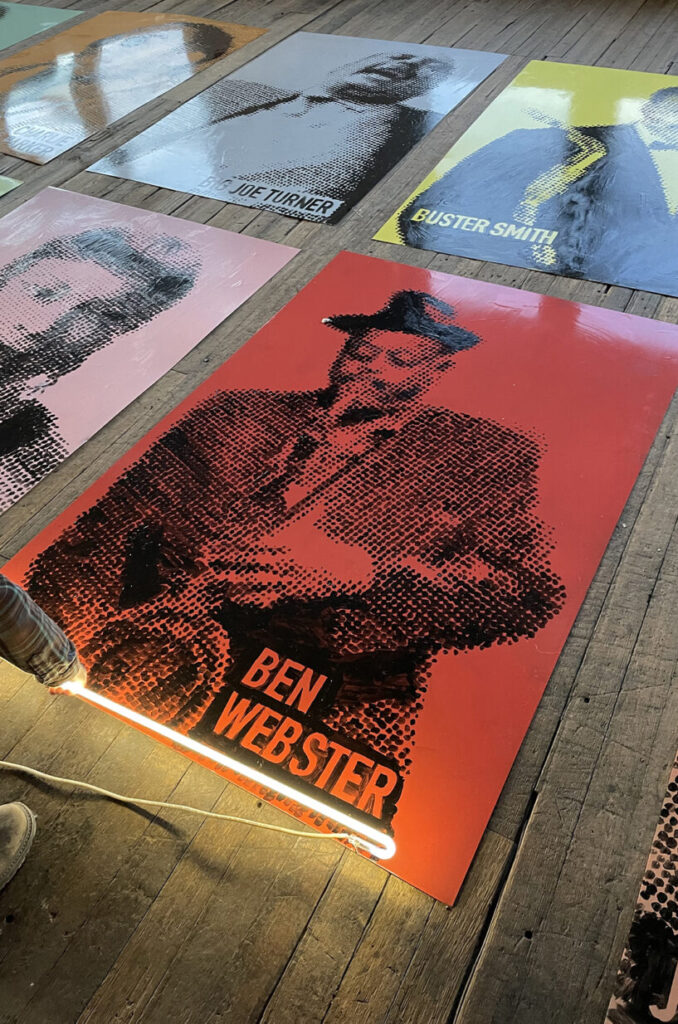A revitalized building in the 18th and Vine Jazz District that once housed a hair salon will reopen this summer as a restaurant and nightclub, teased developer Adam Jones.
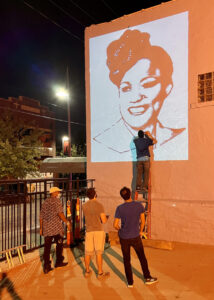
A mural of Ruthelle Winkfield is painted on the side of Ruthelle’s in the 18th and Vine Jazz District
The spot will be named Ruthelle’s in honor of Ruthelle Winkfield, who operated the salon and lived in the building’s upper level for more than 50 years, Jones said, also noting that a mural of Winkfield was painted on the side of the building.
“I thought the coolest way to honor her, the building, and the community was to call it Ruthelle’s,” Jones said.
Jones envisions Ruthelle’s as a gathering spot and community space at all hours of the day, beginning with a coffee shop-like atmosphere in the morning, transitioning to a restaurant in the afternoon, and ending the night by providing a nightclub experience, complete with live music and alcoholic drinks.
Ruthelle’s will feature an “old school” brick barbecue pit built by legendary Kansas City pit builder Bill Chaney and large pavilion in the yard behind the building, Jones said.
The pavilion is set to feature a Kansas City Jazz Hall of Fame installation, complete with 18 portraits of prominent local Jazz artists from the early 20th century.
Jones commissioned Cliff Baldwin — his former classmate at the Kansas City Art Institute — to create the portraits, which were curated by Chuck Haddix of KCUR.
Both the mural and the portraits were made possible because of $20,000 in grant funding from Dashboard, an Atlanta nonprofit focused on raising social awareness through artwork in shared public spaces.
The goal, Jones added, is to cultivate a space that welcomes neighborhood residents and travelers from across the globe alike.
“I hope we can create a space they’ll feel good about being a part of in the [Jazz] District,” Jones said. “I hope we can create a place for tourists. People come from all over the world to visit the Jazz District, and there aren’t enough choices for them.”
‘The power of the place’
Jones purchased the building — which has been vacant since the 1980s — from a longtime friend almost eight years ago, he said, and plans to have Ruthelle’s open by August, if not sooner.
In addition to juggling his other development projects and figuring out where event spaces fit in during a lingering global pandemic, Jones has taken his time redeveloping Ruthelle’s to make sure the 100-plus-year-old building maintains its original character, he said.
“Really, the whole thing with Ruthelle’s is for it to be representative of this wonderful East Side community, representing the spirit of the early entrepreneurs that made this such a cool district,” Jones said.
Elvis Achelpohl — architect associate at BNIM and one of Jones’ longtime collaborators — was tasked with preserving the building’s history during the renovation process.
Key to that, Achelpohl said, was “honoring the crankiness of the building,” with such touches as re-installing a period-appropriate pressed tin ceiling, and opting to keep the old pink and green wallpaper.
The shape and proportions of the pavilion roof were also crafted to mimic a building that once stood in the yard behind the salon, Achelpohl said, noting that he relied on old aerial photos from the 1940s.
“Part of the importance of the project is to not just acknowledge, but showcase and exhibit the culture and the history,” Achelpohl said. “We’re trying to demonstrate the power of the place.”
‘Long life, loose fit’
Despite the building being more than a century old, Achelpohl said that renovations weren’t too difficult. He described the building using the term “long life, loose fit,” meaning it wasn’t tailored or designed for a narrow, specific use.
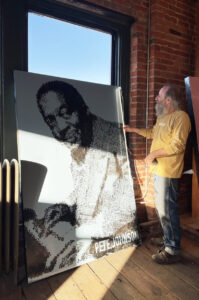
Adam Jones with a painting of Pete Johnson for the Kansas City Jazz Hall of Fame installation at Ruthelle’s
“The building itself is relatively simple, and it has good light, and good proportions of rooms, and it’s built relatively well,” Achelpohl said. “What that means is it can accept a whole range of different small businesses, or even residential.”
“I think that flexibility of building design is one of the reasons why buildings of that era that still remain have been allowed to do so, because it’s not super challenging to renovate,” Achelpohl added.
The renovations are secondary to the most important aspect of the project, Achelpohl said, which is Ruthelle’s location in the heart of the Jazz District.
“There’s no doubt in my mind that it is one of the most important neighborhoods or most important set of blocks in Kansas City,” Achelpohl said. “Kansas City is one of the only UNESCO World Heritage sites for music, and that’s because of what happened at 18th and Vine.”
While he admits that Ruthelle’s could never fully recapture the “richness” that filled the district nearly a century ago, Achelpohl hopes the restaurant and club will at least harken to that era.
“Foremost in our minds,” Achelpohl said, “is, ‘How can Ruthelle’s claim some space to be an environment that evokes our imaginations of what that heyday was?’”





